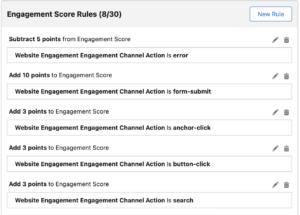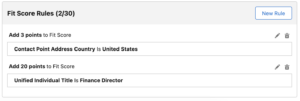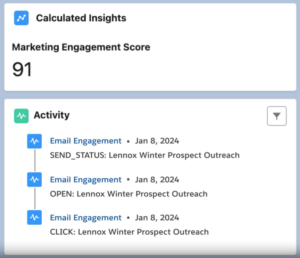For B2B businesses, it is critical to be able to measure the quality of inbound leads. This supports the marketing handover to sales and focuses resources on the best leads. It also provides key insights into who is responding to your inbound marketing activity. More importantly, it helps you communicate with and service your customers better. Let’s explore how to score your leads like a pro using Marketing Cloud Growth…
Who are we scoring?
Before we get into the fun bits, we first need to understand the Unified Individual. As Marketing Cloud Growth is powered by Data Cloud, we use the Data Cloud data model for marketing.
A Unified Individual (Data Cloud, Marketing Cloud Growth) is the equivalent of a Prospect (Account Engagement) or a Contact (Engagement), but it’s also so much more. A Unified Individual is made up of a single, or multiple individual, records that may have come from one or multiple data sources.

Why is this a game-changer for marketers?
These days, marketers need to work across many different platforms and tools to deliver omnichannel campaigns and manage the business’s brand. Data Cloud ingests data from these different sources, and unifies the individual records to form a single record: a Unified Individual.
This allows us to track our leads and customers across channels, without having to use manual efforts or many connector tools. Now let’s look at how to score our Unified Individuals.
Behaviour-based Scoring
As with Account Engagement, you can score leads (Unified Individuals) in Marketing Cloud Growth based on their activities. For example, clicking a link in an email or submitting a form on your website.
The difference in Marketing Cloud Growth is that we can create our own scoring rules, with multiple conditions across channels.

The flexibility of these scoring rules means that we can be really granular with our scoring. The behaviours that indicate high intent to buy, such as reading a specific page on the website or submitting a form, can be scored more highly. Whereas more passive activities such as opening an email can be given lower scores.
You should look to create up to 30 rules for engagement scoring, with a value between -100 – 100.

Scoring based on Fit
In addition to scoring our leads based on how engaged they are with our business, we can also score leads on how interested we are in them based on what we know. For example, if we are a B2B business providing finance software, then we would probably be most interested in leads with job titles such as ‘Finance Director’. If we are mainly based in the United States, then we would want to score leads based there more highly too:

Our fit rules are flexible and can be based on several conditions, applying a score between -100 – 100.
Combine scores for an overall qualifier
Marketing Cloud Growth gives Unified Individuals an Overall Score based on the Engagement Score and the Fit Score. We can customise how much the two scores impact the overall score:

Here we have set up 75% of the Overall Score will be made up of the Engagement Score, and 25% will be the Fit Score. Marketing Cloud Growth normalises the scores to give a single Overall Score from 0 – 100. This provides a clear range for all users to understand how qualified a Lead is.

This will be different for all businesses. To understand how to best score your leads for qualification, analyse your converted leads and understand the most common attributes. Look at the campaigns they have interacted with and what sort of activities they completed before converting to an opportunity.
To learn more about B2B sales and marketing using Salesforce, or for support implementing Marketing Cloud Growth get in touch with one of our marketing experts today.

